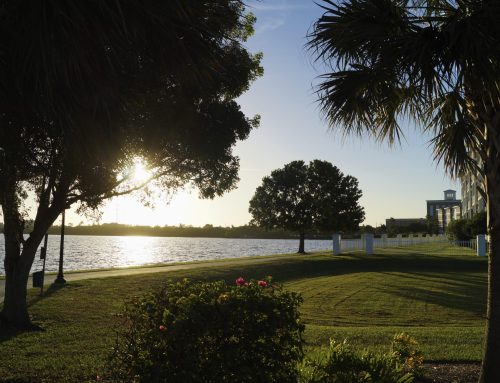Growing an orange, lime or lemon tree in your backyard is one of the perks of living in southern Florida. Our warm climate and average of 237 sunny days a year make the perfect climate for growing these delicious treats. However, just like any type of plant, citrus fruit has specific requirements for producing the sweetest, most fragrant and most visually stunning fruit possible.
The experienced team at Cutters Edge have over 150 years of combined experience in gardening and landscaping services, so you can rest assured they know how to bring out the best in your citrus plants. However, if you’re looking to learn more about the basics of planting and cultivating the best citrus possible, keep scrolling to read our handy guide to growing Florida’s most iconic fruit.
Choosing The Perfect Citrus Tree
There are many different varieties and types of citrus plants, but selecting the best type for your particular landscaping wants and needs can be narrowed down to three factors:
Freeze sensitivity: If you live in an area of Florida that does sometimes experience freezes, you will probably want to choose a variety of citrus that is a bit more hardy. Also, late season citrus varieties could freeze before they have a chance to mature.
Cross-pollination: Some citrus (like mandarins) produce very little fruit unless another mandarin tree is nearby for cross-pollination. Take that into consideration if you’re looking for a bumper crop of fruit.
Pest protection: Some citrus varieties are more susceptible to pests and diseases than others. If you only have one of two of these varieties, this may not be a big issue; but if you’re looking to plant quite a few, then this may be a problem for your landscaping goals.
Choose the Perfect Location
Unsurprisingly, citrus plants love the sunshine. Make sure to plant any citrus trees at least 15 feet apart and south facing (if possible), in order to make sure you have the most vibrant and productive plants. Don’t forget that citrus trees can grow quite large when properly taken care of. Make sure that septic tanks and drain fields are avoided when planting your citrus plants in order to avoid any issues once your plants mature.
Planting & Watering Your Citrus
If your citrus has been established in a container, you can plant your baby tree at any time of the year. First, remove any of the loose material closest to the roots before planting as this will help the tree establish and grow their roots.
Plant your young tree in a hole no deeper than the pot it was originally growing in. Using soil, build a basin that will hold roughly 5-10 gallons of water to soak the roots in. Young trees love and need water. Fill the water basin described above at least twice a week for the first month and then once a week for the second month. After that, keep an eye on your citrus and give it a good watering if you ever see it wilting, or any drought conditions persist.
Citrus Plants and Weeds
Citrus trees can be quite hardy, but are particularly susceptible to root rot. Be sure to keep the area under the canopy of the tree free of grass, mulch and weeds – particularly near the trunk of your tree. Root rot can seriously damage or even kill your tree if not prevented. Mulch is not ideal for citrus trees, but if it is located in a cultivated bed, make sure the mulch is at least a foot away from your tree trunks.
Fertilization and Pruning
To get the most out of your citrus trees, make sure the soil that you grow them in is slightly acidic to near neutral (6.0 to 7.0 pH). Don’t apply fertilizer to your young tree until at least 3 weeks after planting. During the first year, apply fertilizer about every six weeks from February through October. Fertilizer should cover the basin area during the first year. In all the following years, a good rule of thumb is to spread the fertilizer as many feet beyond the dripline of the canopy as the age of the tree in years (up to ten). Fertilizer near or in contact with the truck should be avoided.
When it comes to pruning, the first thing you need to do is remove any suckers from the base of the tree.Suckers are very vigorous vertical shoots that are slow to bear fruit and, if you do not remove these, it could ultimately interfere with the growth and abundance of your tree. Mature citrus trees don’t require pruning of the canopy unless there’s been freeze damage or any disease issues. In fact, if you prune too much, it can reduce the overall fruit production of your tree.
There is nothing quite like beautiful, vibrant citrus trees to improve the overall appearance of your property’s landscaping. In order to grow these iconic Florida fruits to their full potential, a careful green thumb is needed. If you’re interested in adding these plants to your landscaping, but want to ensure that it has that “professional” finish, contact the team at Cutters Edge. With over seventy team members and more than the two hundred pieces of specialized equipment, Cutters Edge is perfectly positioned to make the most of your property’s landscape. Contract them today for a free estimate.





